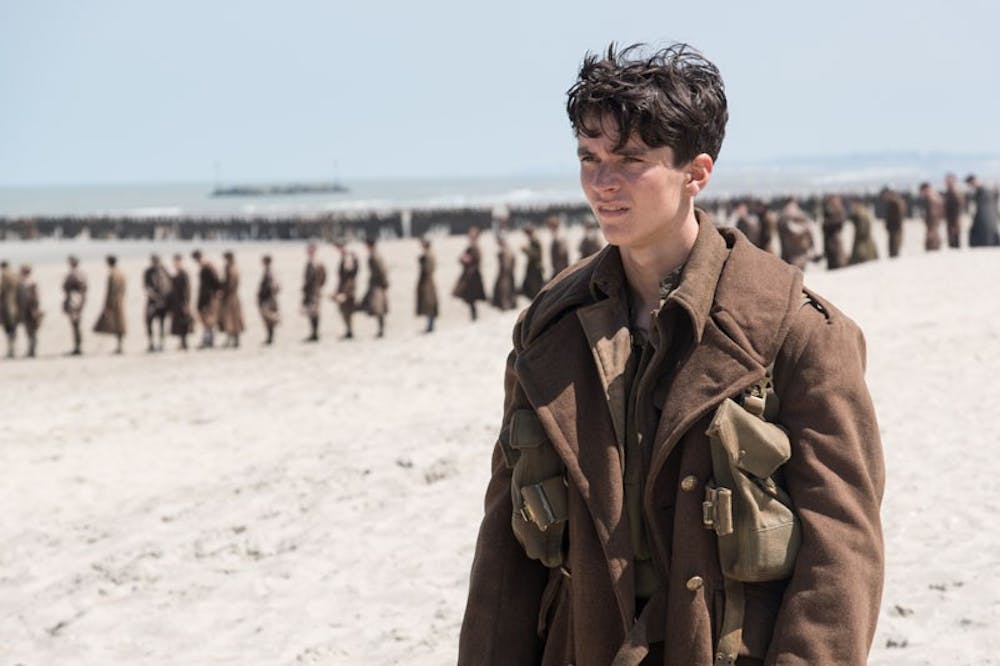Any fan of director Christopher Nolan knows time plays an important role in some of his most-popular cinematic works. Memento uses time to tell a story out of sequence, Inception explored time within dreams and Interstellar put time into a physical space continuum to allow for an alternative method of parallel time streams.
Nolan’s latest feature-length film — only his 10th, and his first in three years — incorporates time into a more realistic situation.
Dunkirk is based on the real-life rescue of Allied soldiers in the beginning World War II on the French beaches of Dunkirk, just across the British Channel.
The film incorporates three stories that take place on land, sea and air. The film jumps around from each of those stories, but the events do not happen all in the same timeframe. The land arch happens throughout a week, sea in a day and air in just an hour. A lot of the suspense is created by the way the three plotlines come together.
Tension and conflict are important to movie plots, and can be easily created through dialogue — a component Dunkirk lacks. Dunkirk could have been a silent film, because there were only a few scenes that relied heavily on dialogue. The rest was filled with music composed by Hans Zimmer, who has worked with Nolan on most of his films. The sound of a ticking clock was incorporated into the score and is the source of the building tension. When a major attack was about to happen, or some of the plot started to connect, the ticking would get louder and faster. The sound puts viewers on the edge of their seat, anticipating the next major plot point.
Nolan stepped slightly out of his element when it came to the film’s genre. He tackled two subgenres he has never explored before — historical and war — but the film shows no evidence of Nolan’s lack of filmography in the genres. Right out of the gate, Nolan throws people into the war. There is no exposition, no character background — all the audience knows is the people are trapped at Dunkirk and are awaiting help. The film is all climax and stays at an intense high from the opening sequence through the end.
Nolan didn’t even bother to name some of his characters, and if he did, no one would remember their names because of the absence of dialogue. The film doesn’t focus on any one character, so there is not a true protagonist. The film contains one of the best ensemble casts of the year. Nolan brought in actors he has worked with many times — Tom Hardy and Cillian Murphy, for example — but also introduced to the world to new ones, such as Fionn Whitehead and musician Harry Styles. But one can’t tell that the newbies have never worked on a film before — their performances were some of the best in the movie. The discouragement and despair the characters feel is palpable. Even without character background, it’s hard not to sympathize with the soldiers.
Dunkirk is already being praised as the best movie of the year so far — and rightfully so. It isn’t bogged down by war-movie tropes, but it’s still a war movie through and through. As usual, Nolan puts his personal stamp on the film and proves, once again, that he is the director of this generation.
Rating: 4.5/5






